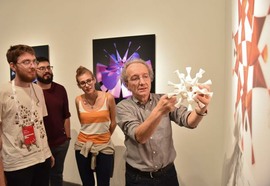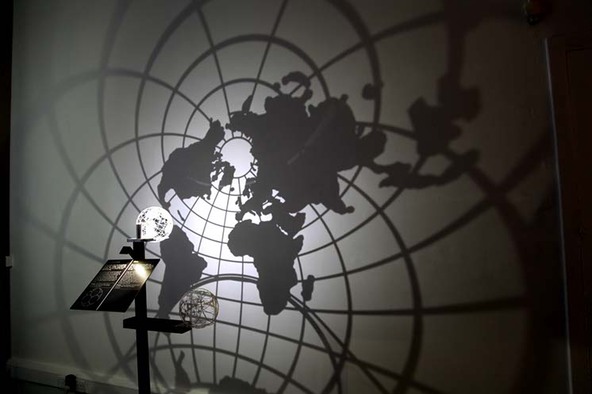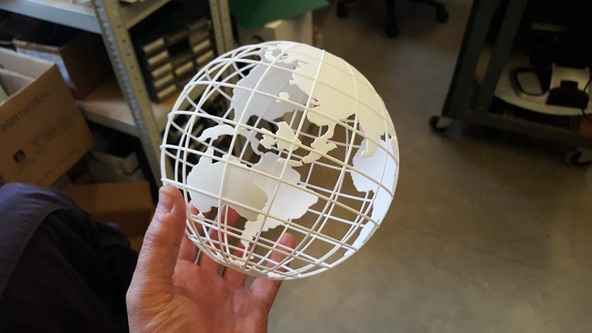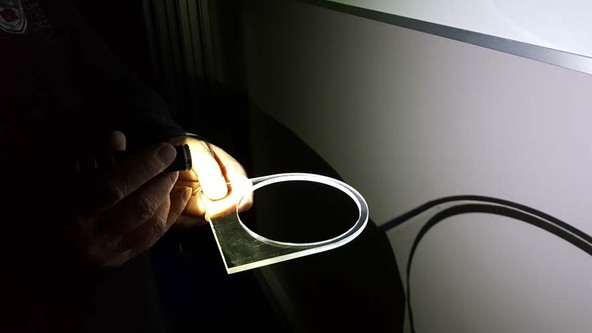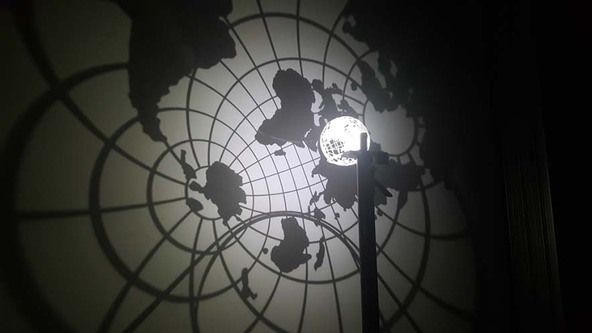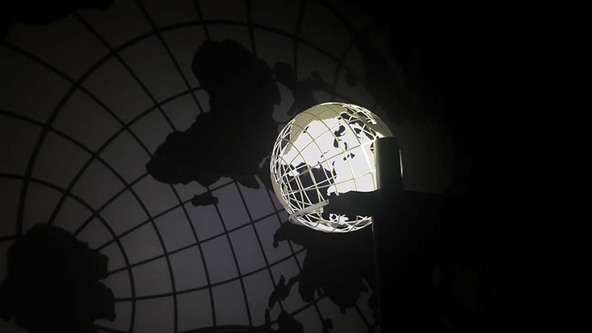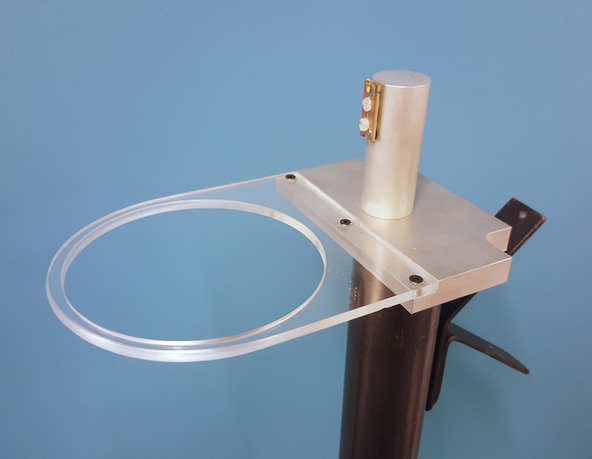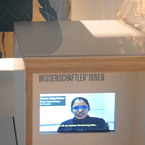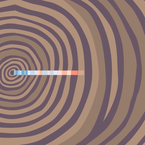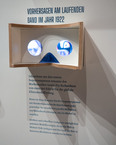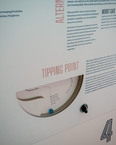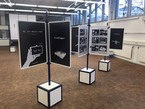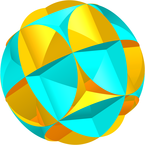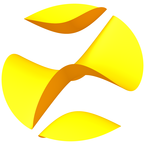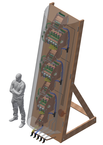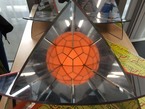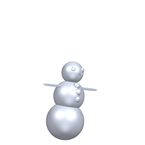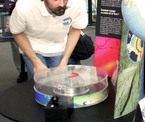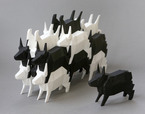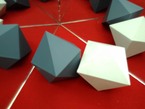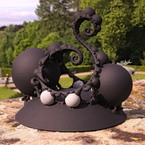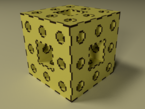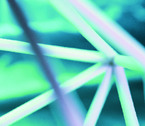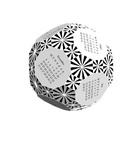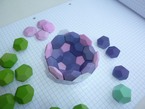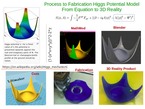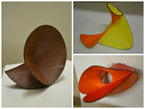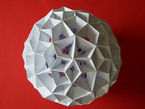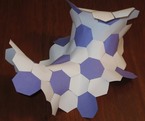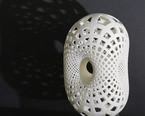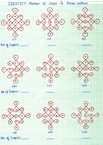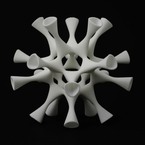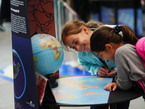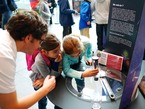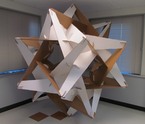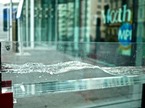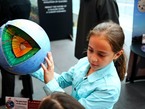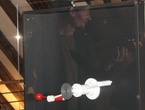The Italian premiere of a large IMAGINARY exhibition
Stereographic projection globe
체험활동
저작권
크레딧
- Original globe 3D design
- Additional 3D design
- Electronics
- Machining
- Blurbs
웹사이트
A very small LED casts a shadow of a 3D printed globe onto a wall, illustrating stereographic projection. The globe can be freely rotated by a visitor, to see the changes in distortion of the map.
This exhibit illustrates stereographic projection using rays of light projecting through a model of the globe onto a large nearby wall. Visitors can rotate the globe around to put different parts of the world in the center of the projection, seeing how the distortion of the map changes. The globe is the most recognisable spherical design to project, but other patterned 3D printed spheres can be substituted if they are available nearby.
The room should be mostly dark for this to work well. The LED light should be as small as possible, so that the shadows are sharp. It should also be bright, so that it can light up a wall. On the other hand, the LED should not get hot enough to be dangerous to people interacting with the exhibit. Also, the globe can be left with part of a continent touching the LED, and the LED should not be hot enough to significantly heat up the plastic.
When we ran this exhibit as part of the Brilliant Geometry exhibition in Edinburgh, out 3D prints were made by Shapeways in their “White Strong & Flexible” material. This is a nylon material, fabricated using selective laser sintering. We put foam (actually yoga mats) on the floor to guard against the possibility of people accidentally dropping the 3D printed spheres. Over a three week exhibition, we had no breakages.

